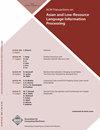MRMI-TTS:多参考音频和互信息驱动的零镜头语音克隆
IF 1.8
4区 计算机科学
Q3 COMPUTER SCIENCE, ARTIFICIAL INTELLIGENCE
ACM Transactions on Asian and Low-Resource Language Information Processing
Pub Date : 2024-03-30
DOI:10.1145/3649501
引用次数: 0
摘要
文本到语音(TTS)中的语音克隆是用有限的数据复制目标说话者语音的过程。在各种语音克隆技术中,本文重点研究零镜头语音克隆技术。虽然现有的 TTS 模型可以为看到的说话者生成高质量的语音,但克隆未看到的说话者的语音仍然是一项具有挑战性的任务。零镜头语音克隆的关键是获得目标说话者的说话者嵌入。以前的工作使用扬声器编码器从单个参考音频中无监督地获取固定大小的扬声器嵌入,但它们存在扬声器信息不足和扬声器嵌入中内容信息泄漏的问题。为了解决这些问题,本文提出了基于 FastSpeech2 的框架 MRMI-TTS,它使用扬声器嵌入作为提供扬声器信息的条件变量。MRMI-TTS 使用扬声器编码器和内容编码器从多参考音频中提取扬声器嵌入和内容嵌入。为了获得足够的说话者信息,多参考音频是根据句子相似度来选择的。在公共英语数据集 VCTK 上进行的实验表明,我们的方法可以提高合成语音的相似度和自然度,即使是未见过的说话人。与最先进的参考嵌入学习方法相比,我们的方法在零镜头语音克隆任务中取得了最佳性能。此外,我们还证明了所提出的方法在不同语言中保持说话人嵌入的能力更强。演示页面提供了输出样本。本文章由计算机程序翻译,如有差异,请以英文原文为准。
MRMI-TTS: Multi-reference audios and Mutual Information Driven Zero-shot Voice cloning
Voice cloning in text-to-speech (TTS) is the process of replicating the voice of a target speaker with limited data. Among various voice cloning techniques, this paper focuses on zero-shot voice cloning. Although existing TTS models can generate high-quality speech for seen speakers, cloning the voice of an unseen speaker remains a challenging task. The key aspect of zero-shot voice cloning is to obtain a speaker embedding from the target speaker. Previous works have used a speaker encoder to obtain a fixed-size speaker embedding from a single reference audio unsupervised, but they suffer from insufficient speaker information and content information leakage in speaker embedding.To address these issues, this paper proposes MRMI-TTS, a FastSpeech2-based framework that uses speaker embedding as a conditioning variable to provide speaker information. The MRMI-TTS extracts speaker embedding and content embedding from multi-reference audios using a speaker encoder and a content encoder. To obtain sufficient speaker information, multi-reference audios are selected based on sentence similarity. The proposed model applies mutual information minimization on the two embeddings to remove entangled information within each embedding.Experiments on the public English dataset VCTK show that our method can improve synthesized speech in terms of both similarity and naturalness, even for unseen speakers. Compared to state-of-the-art reference embedding learned methods, our method achieves the best performance on the zero-shot voice cloning task. Furthermore, we demonstrate that the proposed method has a better capability of maintaining the speaker embedding in different languages. Sample outputs are available on the demo page.
求助全文
通过发布文献求助,成功后即可免费获取论文全文。
去求助
来源期刊

ACM Transactions on Asian and Low-Resource Language Information Processing
Computer Science-General Computer Science
CiteScore
3.60
自引率
15.00%
发文量
241
期刊介绍:
The ACM Transactions on Asian and Low-Resource Language Information Processing (TALLIP) publishes high quality original archival papers and technical notes in the areas of computation and processing of information in Asian languages, low-resource languages of Africa, Australasia, Oceania and the Americas, as well as related disciplines. The subject areas covered by TALLIP include, but are not limited to:
-Computational Linguistics: including computational phonology, computational morphology, computational syntax (e.g. parsing), computational semantics, computational pragmatics, etc.
-Linguistic Resources: including computational lexicography, terminology, electronic dictionaries, cross-lingual dictionaries, electronic thesauri, etc.
-Hardware and software algorithms and tools for Asian or low-resource language processing, e.g., handwritten character recognition.
-Information Understanding: including text understanding, speech understanding, character recognition, discourse processing, dialogue systems, etc.
-Machine Translation involving Asian or low-resource languages.
-Information Retrieval: including natural language processing (NLP) for concept-based indexing, natural language query interfaces, semantic relevance judgments, etc.
-Information Extraction and Filtering: including automatic abstraction, user profiling, etc.
-Speech processing: including text-to-speech synthesis and automatic speech recognition.
-Multimedia Asian Information Processing: including speech, image, video, image/text translation, etc.
-Cross-lingual information processing involving Asian or low-resource languages.
-Papers that deal in theory, systems design, evaluation and applications in the aforesaid subjects are appropriate for TALLIP. Emphasis will be placed on the originality and the practical significance of the reported research.
 求助内容:
求助内容: 应助结果提醒方式:
应助结果提醒方式:


